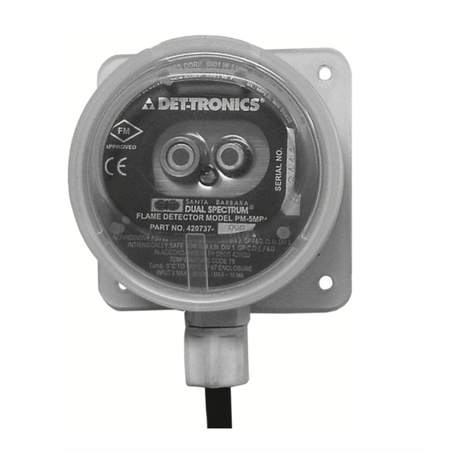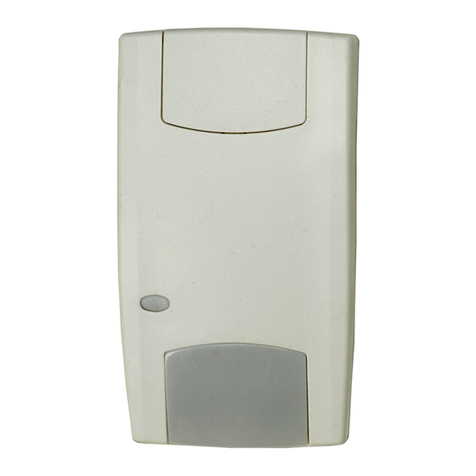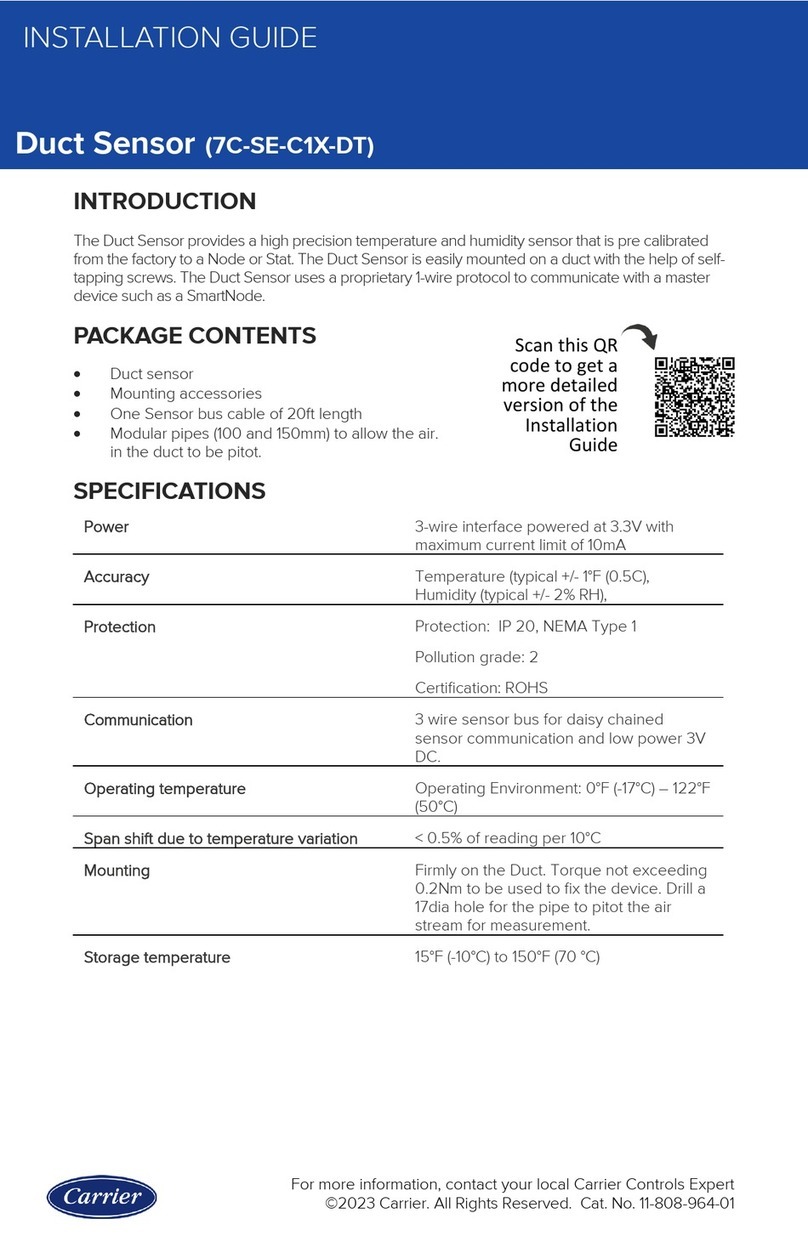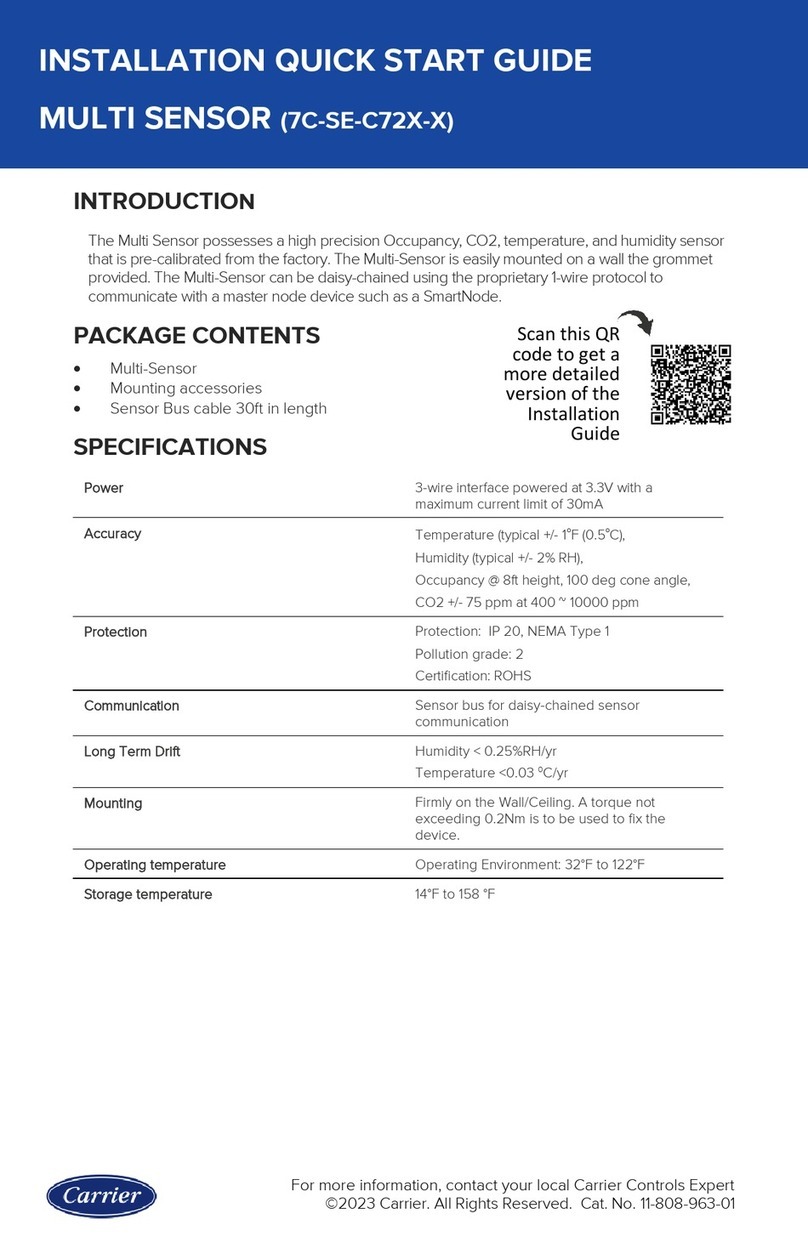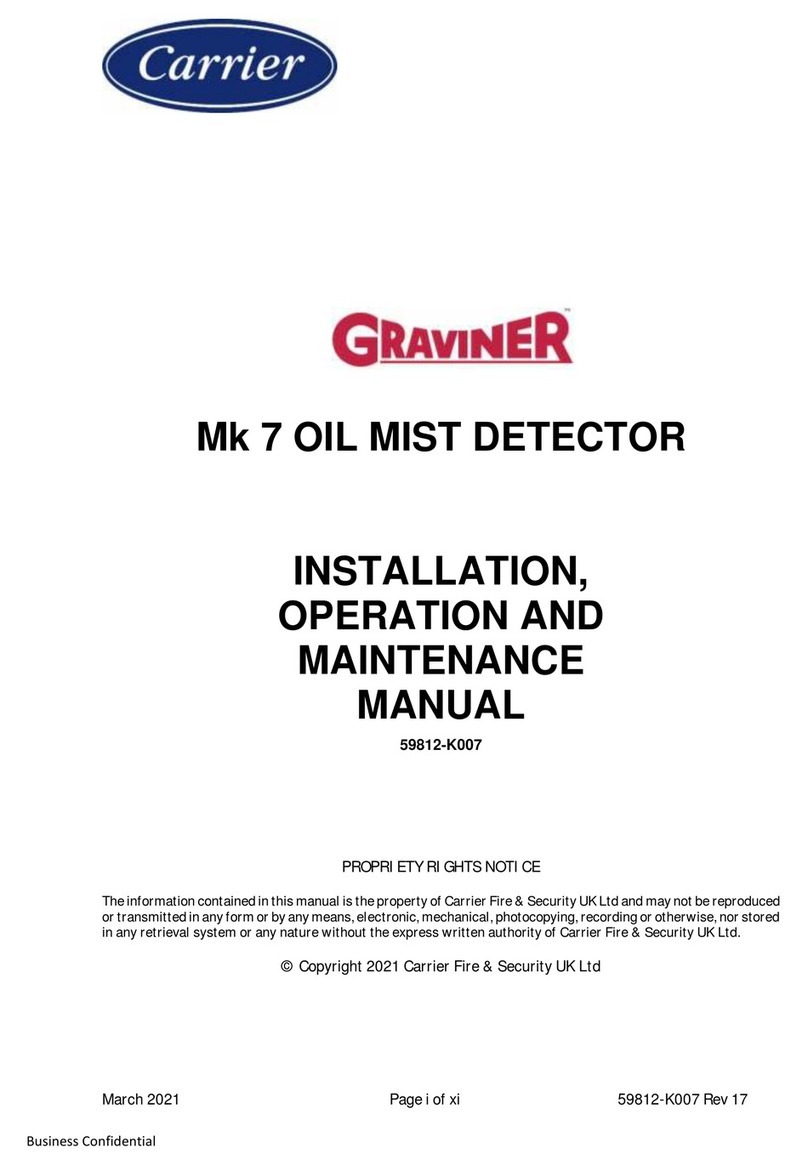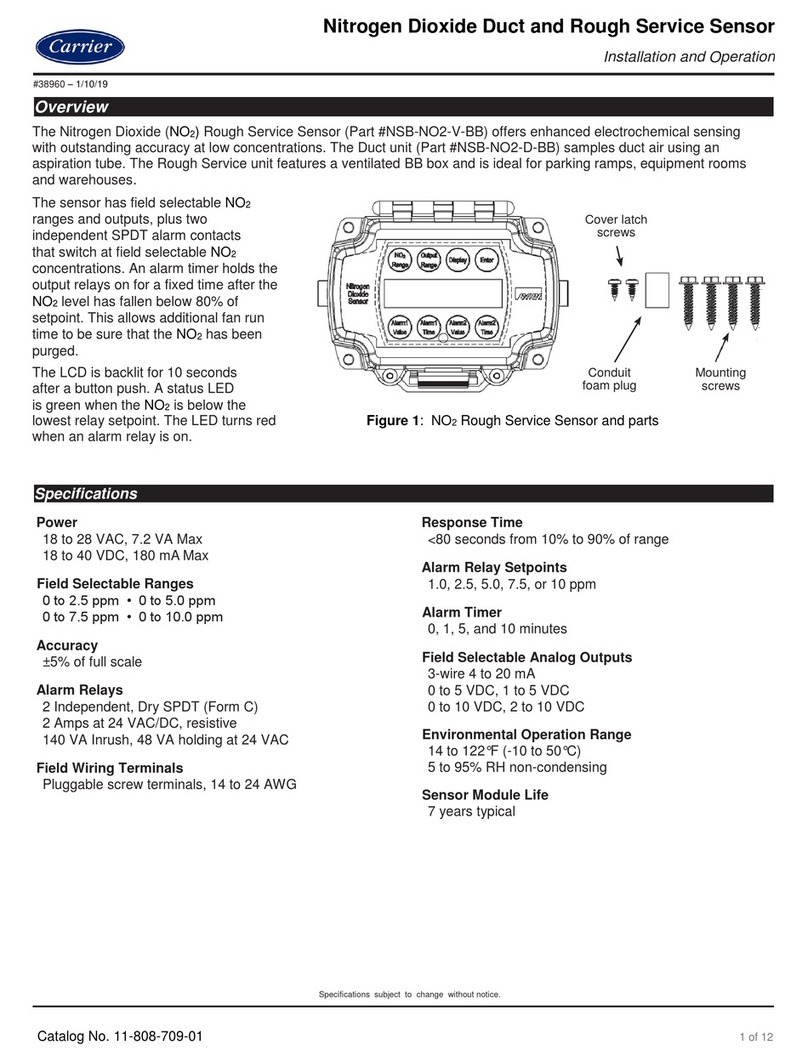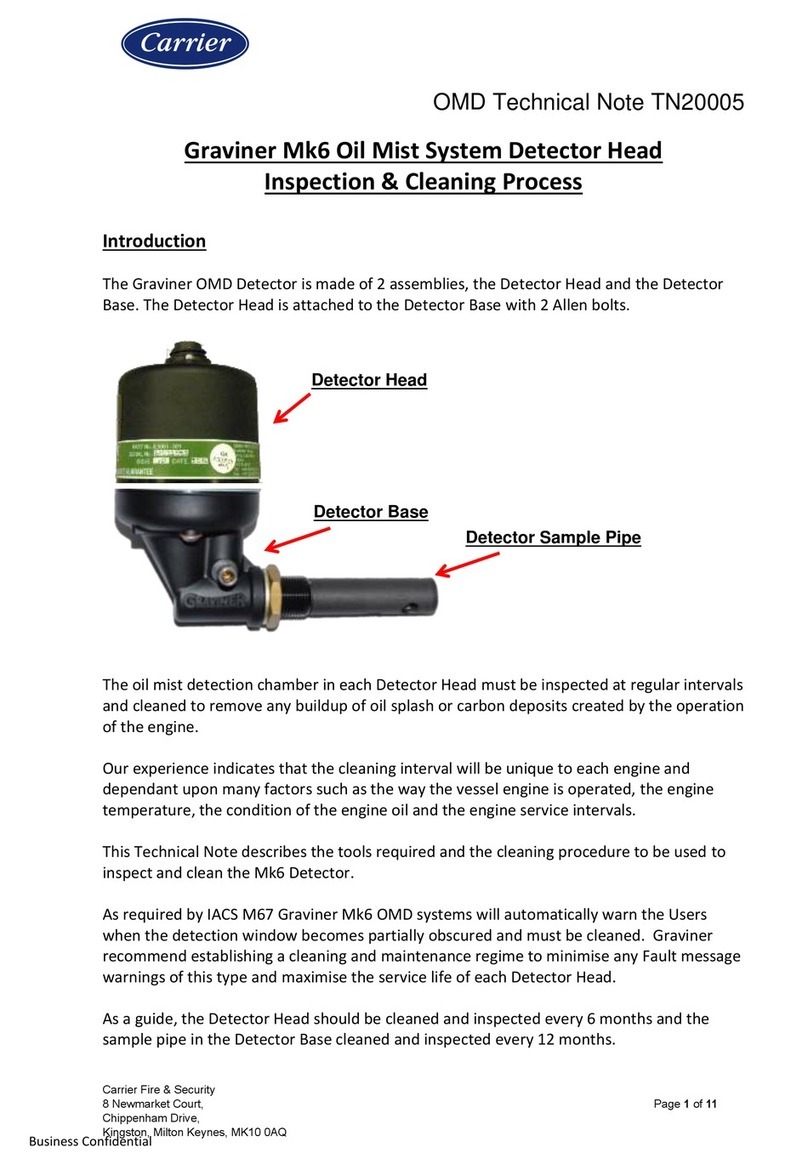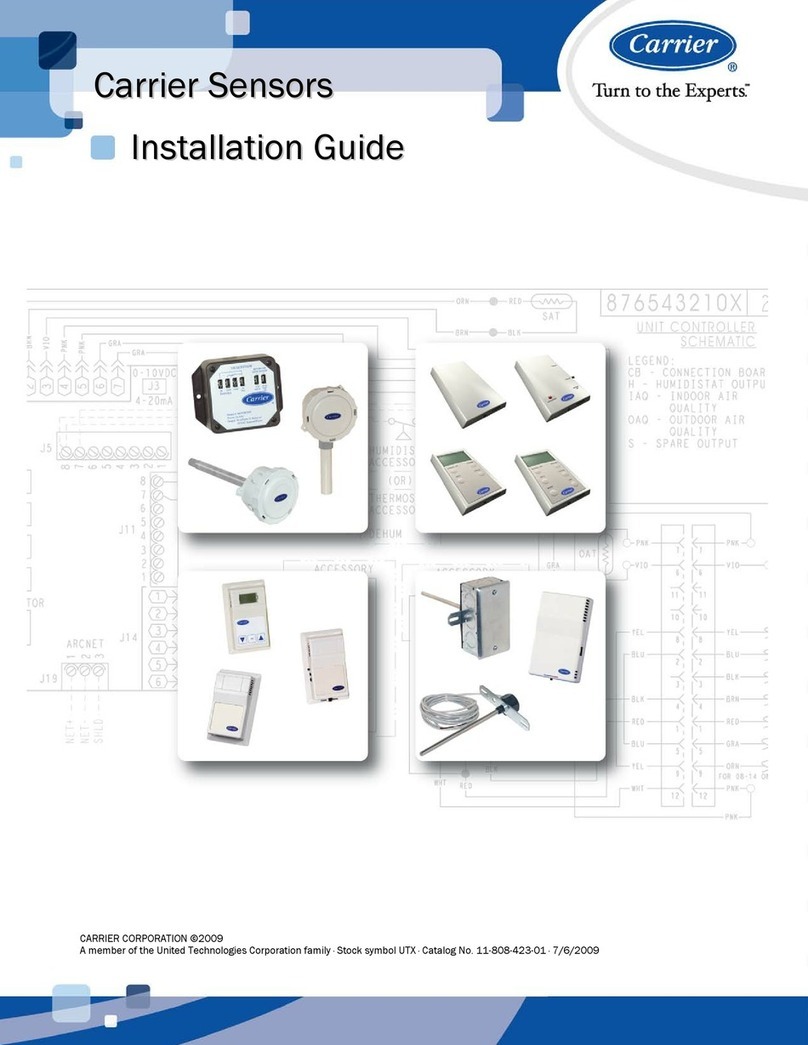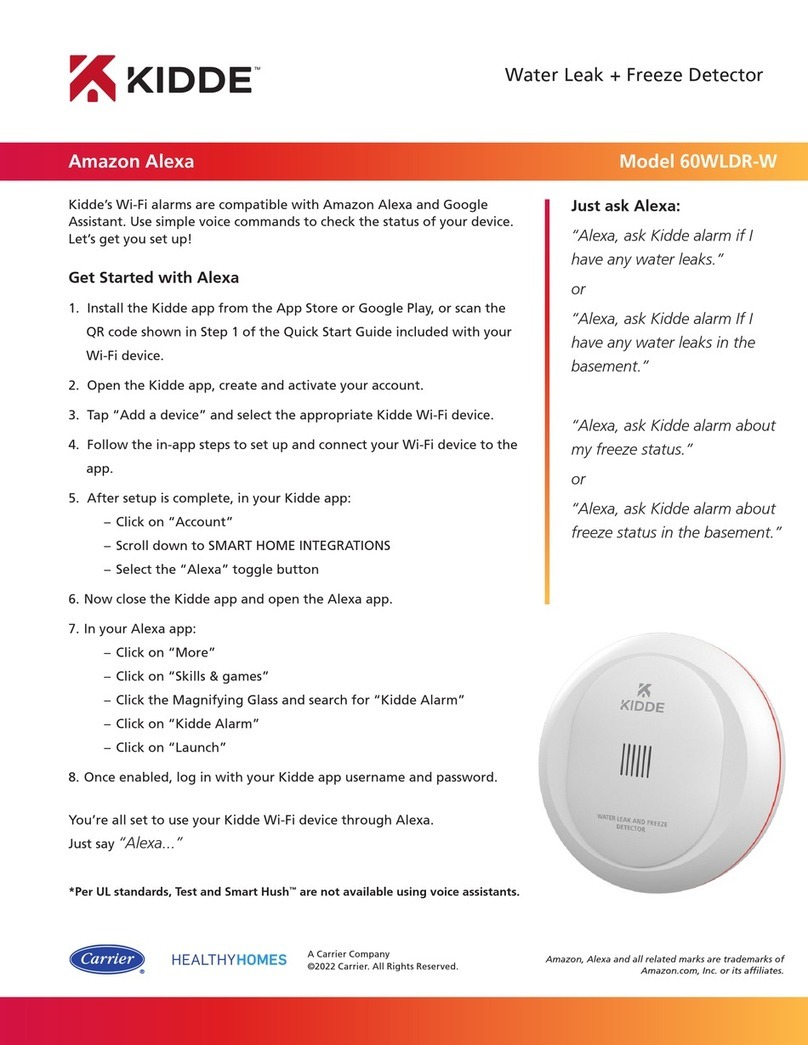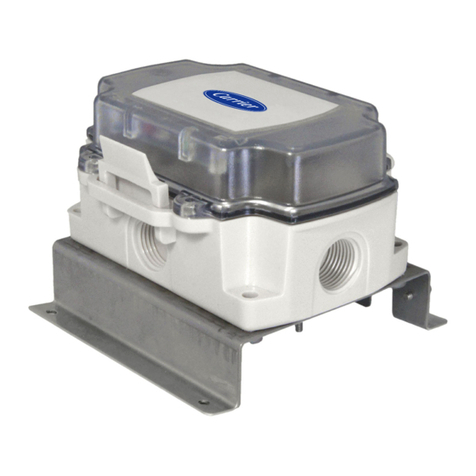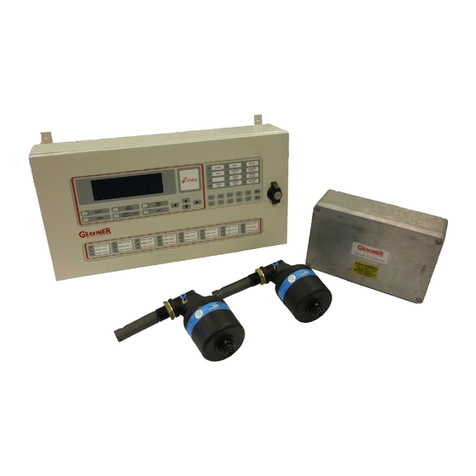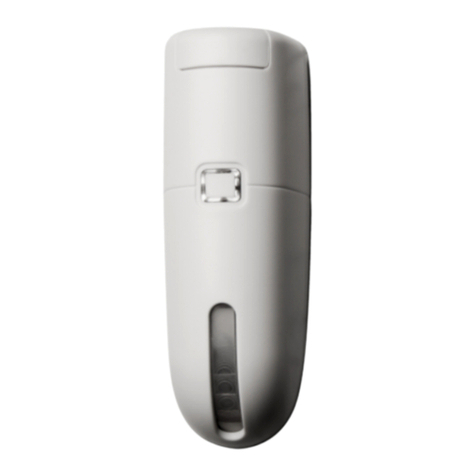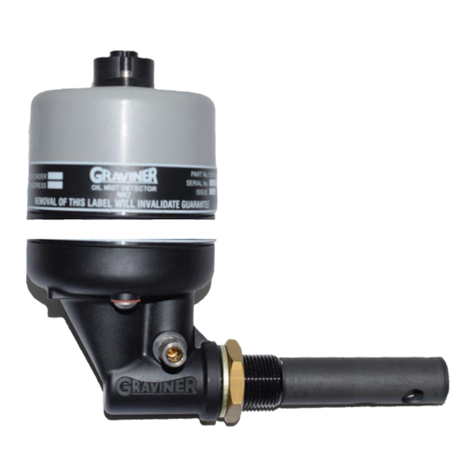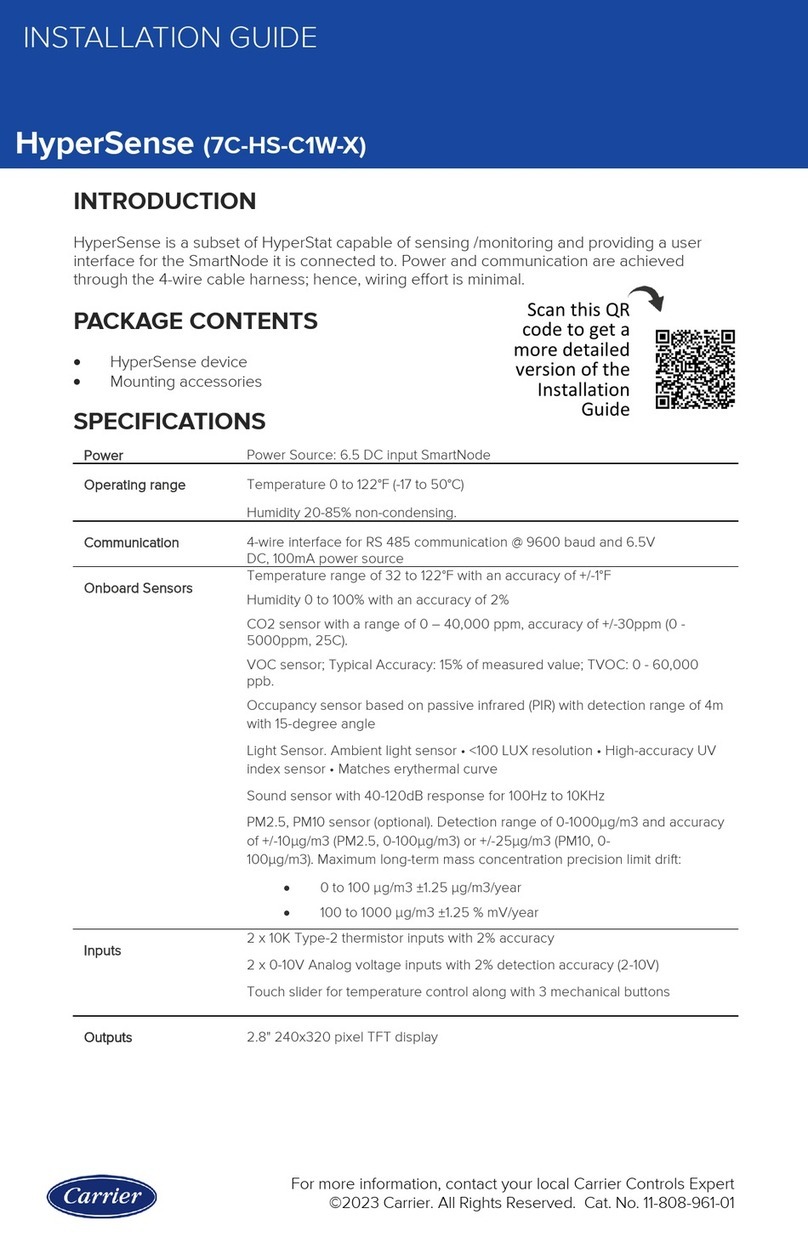
Duct RH-Temperature BACnet MSTP Modbus RTU Sensor
Installation and
#N2-BN2110-D-4-PB-C – 8/31/23
Specifications subject to change without notice.
Catalog No. 11-808-994-01 Page 6of 10
BAUD RATE SELECTION
By default, BACnet Protocol and Auto-Baud is factory set. If
the sensor is field adjusted for Modbus RTU, the baud rate
should be selected at this time to match the Master
configuration. If Modbus RTU protocol is selected it is
recommended the sensor unique address is selected at this
time. Switches 8-10 are used to set the BACnet and Modbus
baud rate. Refer to switch settings. Where (0) is OFF and (1) is
ON. If the system’s baud rate is known, it is recommended to
set the specific baud rate to match the system. If the device is
powered when a change is made, the device must be power
cycled or reset for changes in baud rate to be made.
EOL TERMINATION RESISTANCE SELECTION
RS-485 requires that the last device in a chain have a termination
resistor. This is controlled using a jumper in the EN (enabled) position
marked on FIGURE 5. When the jumper is set to EN (enabled), a 1200
resistance is added in parallel to the data line. When the jumper is set
to DIS (disable), the resistance is not added. By default, the jumper is
placed in the DIS (disabled) position.
RESET
The reset button can be used to reset the device without disconnecting power. The location of this button is shown in
Figure 3.
LED INFORMATION
One LED indicates four statuses. Solid green shows that power is good, but no data is transmitting. A solid Amber
indicates that auto-baud is set and no data has been received to set a baud rate. Green/Amber flashing indicates data is
being transmitted or received. Solid Red LED status indicates an error state, usually loss of communication on the
network. If BACnet is the selected protocol, and this status remains for 10 times the APDU timeout, the device will
automatically reset. If this state remains longer than that, reset the device.
ADDRESS SELECTION
Switches 1-7 are used to set the BACnet and Modbus addressing.
Refer to switch settings. Each device in a network branch must
have a unique address. The value of each position is printed on the
board. By default, the address is
(0). Note: (0) cannot be used if Modbus RTU protocol is selected
and will require a unique address. If the device is powered when a
change is made, the device must be power cycled or reset for
changes in address to be made.
Figure 5: EOL Termination Jumpers
